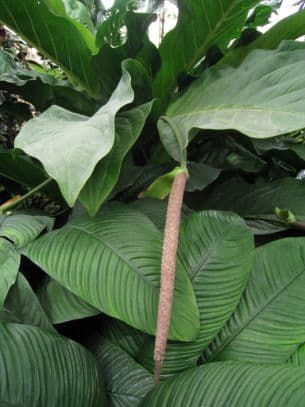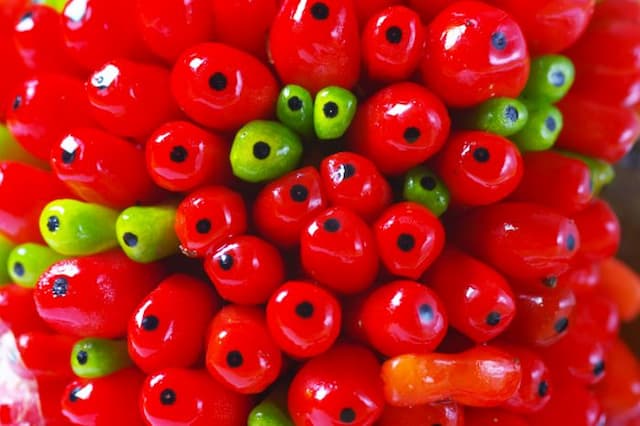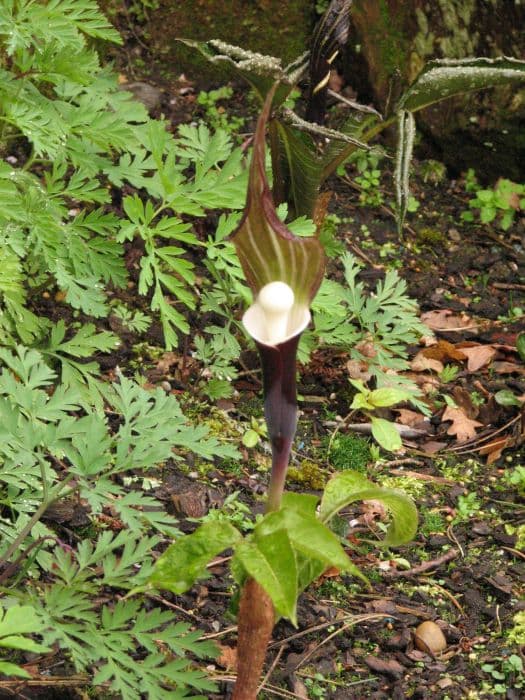Arum lily 'Captain Memphis' Zantedeschia 'Captain Memphis' (PBR) (Captain Series)

ABOUT
'Captain Memphis' is a tuberous, clump-forming perennial with upright, wavy-edged, green to dark green leaves heavily spotted and streaked with white. Sturdy stems to 60cm tall bear bright yellow flowers above the foliage in summer
About this plant
 Names
NamesFamily
Araceae
Synonyms
Calla Lily, Arum Lily
Common names
Zantedeschia 'Captain Memphis'.
 Characteristics
CharacteristicsLife cycle
Perennials
Foliage type
Evergreen
Color of leaves
Green
Flower color
Yellow
Height
1-2 feet (30-60 cm)
Spread
1-2 feet (30-60 cm)
Plant type
Herb
Native area
South Africa
Benefits
 General Benefits
General Benefits- Attractive Flowers: Zantedeschia 'Captain Memphis' is known for its beautiful spathes, which can add a vibrant touch to a garden or floral arrangement.
- Long Blooming Season: It offers a prolonged blooming period, providing color and interest from late spring to early summer.
- Easy to Grow: This plant is relatively easy to care for, making it suitable for gardeners of all skill levels.
- Drought-Tolerant: Once established, it has good drought tolerance, reducing the need for frequent watering.
- Container Gardening: It is well-suited to container gardening, allowing for versatility in placement and making it a good choice for patios and balconies.
- Attracts Wildlife: The flowers attract pollinators such as bees and butterflies, contributing to the health of the garden ecosystem.
- Architectural Shape: The unique shape of the plant—tall stems and large spathes—provides an architectural element to garden design.
 Medical Properties
Medical PropertiesThis plant is not used for medical purposes.
 Air-purifying Qualities
Air-purifying QualitiesThis plant is not specifically known for air purifying qualities.
 Other Uses
Other Uses- Art and Craft - The unique shape and bold colors of calla lilies can be used in dried flower arrangements or as inspiration for artists in paintings or sculptures.
- Photography Prop - Calla lilies can be a striking subject for photographers, providing a natural contrast or focal point in both color and black and white photography.
- Educational - Plant enthusiasts and botany students can study the growth and reproductive cycle of calla lilies as part of horticultural practices.
- Water Filtering - When planted around ponds or water gardens, calla lilies can contribute to the biofiltration of the water by absorbing nutrients and pollutants.
- Fashion Design - The elegant form of calla lilies has been used as inspiration for fashion designers in creating dresses and accessories.
- Culinary Garnish - Although not to be eaten, calla lilies can be used as an ornamental garnish for plating in high-end culinary presentations.
- Symbolic Uses - Calla lilies hold various symbols in different cultures that can be integrated into events and ceremonies that wish to convey these meanings.
- Color Studies - The vibrant color varieties of calla lilies can be used in studies on how colors affect mood and perception in psychological studies.
- Perfumery - While not commonly used in perfumes, the scent of calla lilies could potentially be experimented with in the creation of fragrances.
- Wedding Favors - Small pots of calla lilies can be given as living wedding favors, symbolizing purity and the new beginning that a marriage represents.
Interesting Facts
 Feng Shui
Feng ShuiThe Calla Lily is not used in Feng Shui practice.
 Zodiac Sign Compitability
Zodiac Sign CompitabilityThe Calla Lily is not used in astrology practice.
 Plant Symbolism
Plant Symbolism- Purity: The Captain Calla Lily is commonly associated with purity due to its pristine and elegant bloom, often used at weddings to symbolize the unblemished purity of the bride.
- Beauty: The captivating beauty of the Captain Calla Lily is often seen as a symbol of magnificent and timeless beauty, embodying an aesthetic that is both graceful and mesmerizing.
- Resurrection and Rebirth: In Christian symbolism, the Captain Calla Lily is sometimes connected to the resurrection of Jesus due to its trumpet-shaped blooms that suggest triumph. It can also represent the idea of rebirth and new beginnings.
- Fidelity: As a common component in wedding bouquets and decorations, the Captain Calla Lily is thought to signify fidelity and loyalty in a relationship, reflecting the commitment between partners.
- Overcoming challenges: The Captain Calla Lily has the ability to thrive in various conditions and thus is sometimes seen as a sign of overcoming challenges and continuing to flourish despite adversity.
 Water
WaterCalla lilies, including 'Captain Memphis', prefer consistent moisture, so water them thoroughly whenever the top inch of soil feels dry to the touch. During the growing season, this might mean watering every few days, about 1/2 to 1 gallon per plant, depending on temperature and humidity. Reduce watering after the blooms have faded and when leaves start to yellow, which typically indicates a dormant period. Do not let the plant sit in water, as this can cause root rot.
 Light
LightCalla lilies like 'Captain Memphis' thrive in partial shade to full sun. The ideal spot for these plants is one where they receive morning sunlight and some shade during the hottest part of the afternoon. Too much direct sun can scorch their leaves, while too little can inhibit bloom production.
 Temperature
TemperatureCalla lilies including 'Captain Memphis' prefer temperatures between 60-75 degrees Fahrenheit. They can survive temperatures as low as 50 degrees at night and should be protected if the temperature drops lower. Avoid exposing calla lilies to temperatures over 85 degrees, as high heat can stress the plant.
 Pruning
PruningPrune 'Captain Memphis' calla lilies to remove spent flowers and yellowing leaves to encourage new growth and a tidy appearance. The best time for pruning is after flowering when the plant begins to go dormant. Prune back the leaves only after they've turned yellow, indicating that the plant has entered dormancy; this typically occurs annually.
 Cleaning
CleaningAs needed
 Soil
SoilCalla Lily 'Captain Memphis' thrives in well-draining, rich soil with a pH between 5.5 and 6.5. Ideal soil mix can be achieved using two parts peat moss, one part perlite, and one part compost to ensure both moisture retention and good drainage.
 Repotting
RepottingCalla Lily 'Captain Memphis' should be repotted every 2-3 years or when it becomes root bound. Best done in spring before the growing season starts.
 Humidity & Misting
Humidity & MistingCalla Lily 'Captain Memphis' prefers high humidity levels, around 60-70%, for optimal growth.
 Suitable locations
Suitable locationsIndoor
Use bright indirect light, high humidity, and well-draining soil.
Outdoor
Plant in partial shade, protect from cold, ensure moist soil.
Hardiness zone
8-10 USDA
 Life cycle
Life cycleThe plant commonly known as Calla Lily 'Captain Memphis' begins its life cycle with seed germination or more commonly by being propagated through rhizomes. After planting, the rhizomes will sprout into leafy growth, which emerges from the soil as the plant enters the vegetative stage. Following the vegetative stage, the plant will develop its distinctive spathes – funnel-shaped flowers that are often mistaken as petals, with the true flowers being the spike (spadix) inside the spathe. The flowering stage occurs in late spring to early summer for this perennial, with the bloom period lasting several weeks. After flowering, the plant will enter a dormancy phase in late autumn to winter, where the foliage dies back, and the rhizomes rest underground. Upon the return of favorable conditions in spring, the cycle repeats with new growth budding from the rhizomes.
 Propogation
PropogationPropogation time
Spring to Summer
The Zantedeschia 'Captain Memphis' (PBR) (Captain Series), commonly known as calla lily, is best propagated through division of their rhizomes or tubers. This is often done in late winter or early spring just before the growing season starts. To propagate by division, carefully unearth the plant and gently separate the rhizomes, ensuring that each section has at least one growth point or eye. These separated segments are then replanted into well-draining soil at a depth of about 3 to 4 inches (about 7.5 to 10 centimeters) and spaced approximately 12 inches (30 centimeters) apart. The soil should be kept moist but not waterlogged, and the plants should be placed in a location where they can receive partial to full sunlight. With proper care, these divisions will develop into strong, independent plants that will bear flowers, typically within the same growing season.









